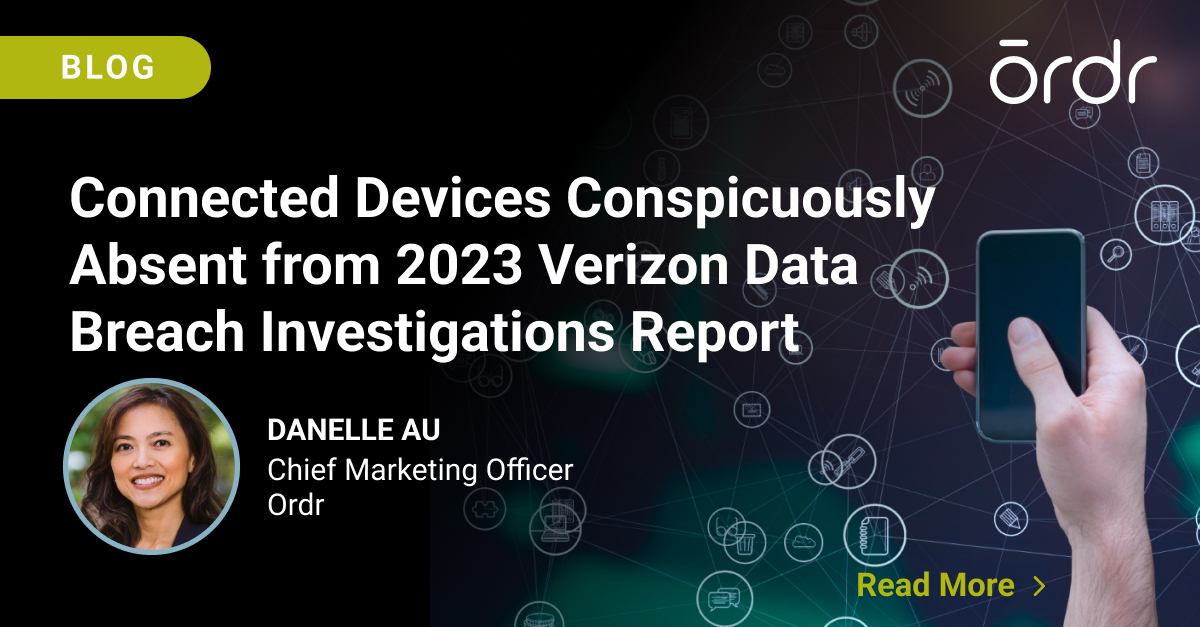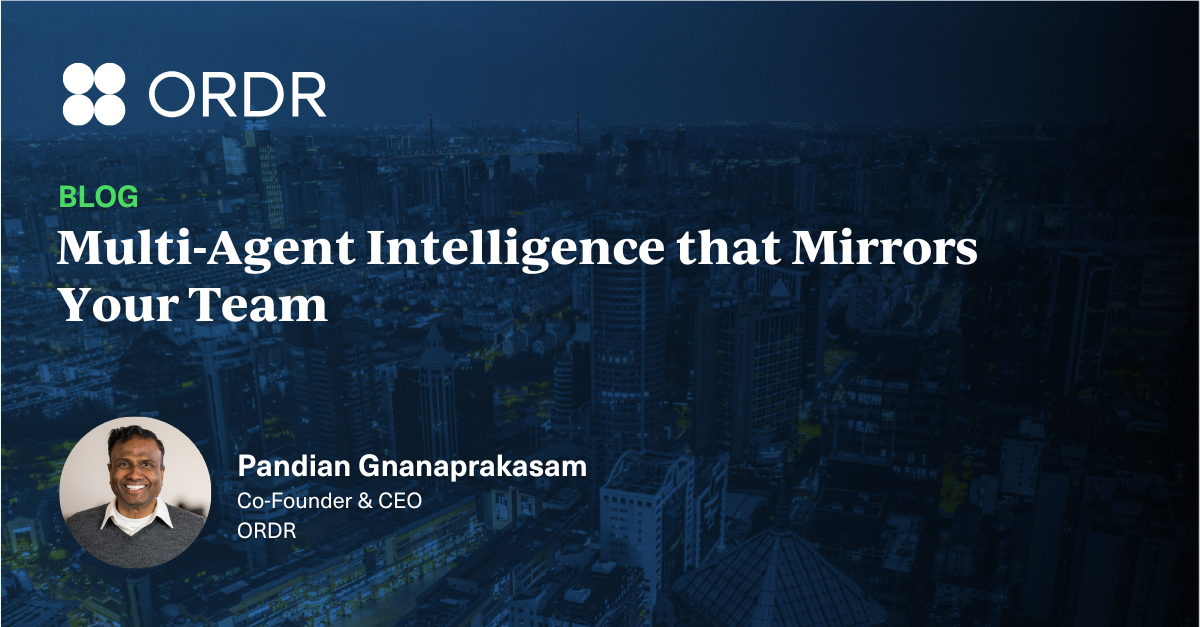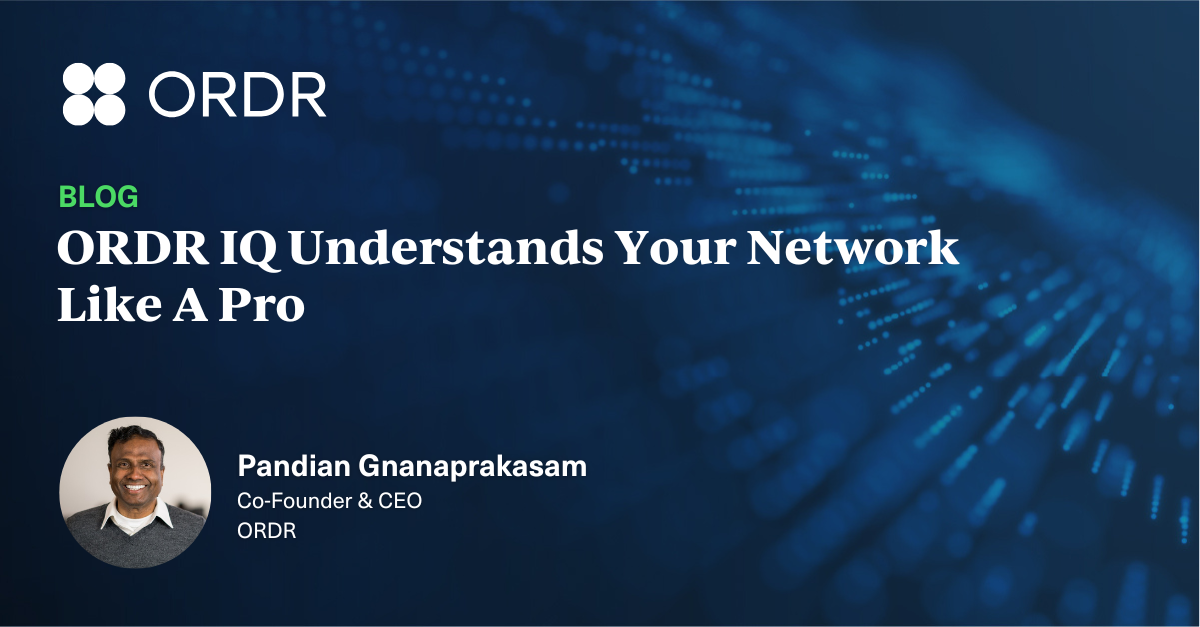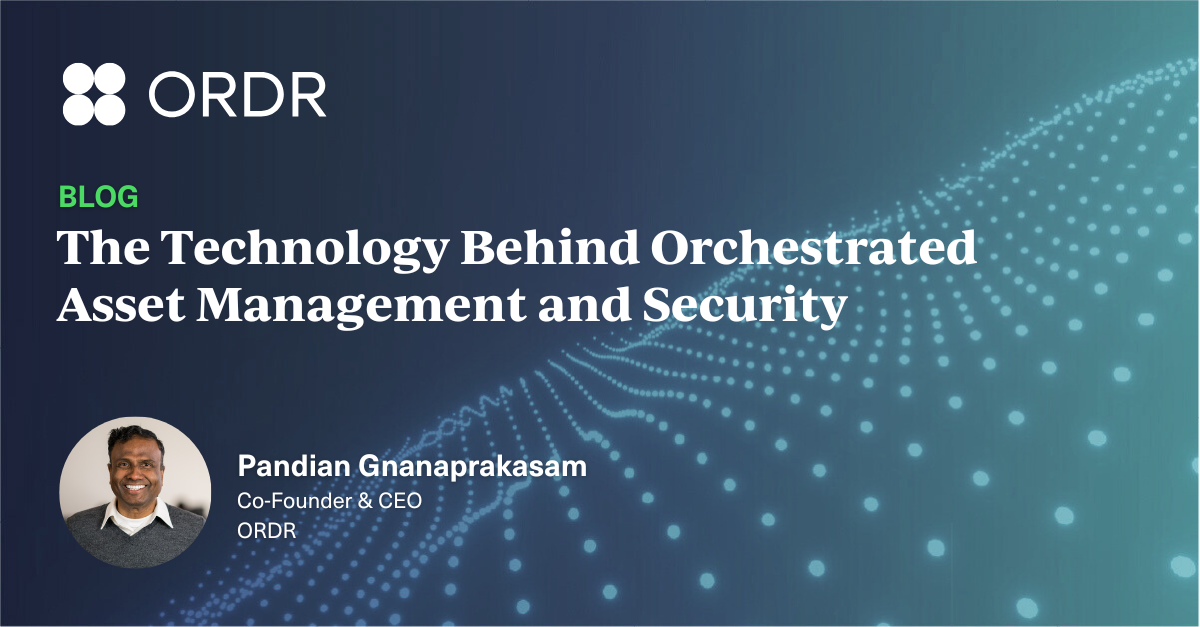The 2023 Verizon Data Breach Investigations Report is out. Like most folks in the cybersecurity industry, we downloaded it and pored over the contents to see what was new and relevant and surprising. As always, there’s a lot of data that quantifies the issues we see everyday: ransomware attacks, social engineering, underlying factors, threat types, etc. For example, the summary of findings identified external actors as the top threat involved in 83% of breaches; said that human error plays a role in 74% of all breaches; and reported that 24% of attacks involve ransomware; and broke down credential theft, phishing, and exploitation of vulnerabilities as the three primary means of attack.
Digging Deeper
Then we gravitated toward findings specific to the industries that Ordr is focused on and that have embraced our technology as a part of their cybersecurity strategies.
- In financial services and insurance, we learned that “basic web application attacks, miscellaneous errors, and system intrusion represent 77% of breaches,” and that financial gain was the motive in 97% of attacks on the industry.
- In healthcare we learned that “system intrusion, basic web application attacks, and miscellaneous errors represent 68% of breaches,” and that financial gain was the motive in 98% of attacks on the industry.
- In manufacturing we learned that “system intrusion, social engineering, [and] basic web application attacks represent 83% of breaches,” and that financial gain was the motive in 96% of attacks on the industry.
Similar results were reported down the line in accommodation and food services, education services, government, IT and so on. Threat actors want money, they are good at finding ways into networks where they aren’t welcome, and whether by their intent, neglect, or error, people inside of breached organizations are a reliable source of help. Each data point illuminates and confirms issues we all intuitively recognize as true.
Threat actors want money, they are good at finding ways into networks where they aren’t welcome, and whether by their intent, neglect, or error, people inside of breached organizations are a reliable source of help.”
Then we started looking deeper. Our focus at Ordr is on protecting enterprises by securing the growing number of connected devices at work in enterprises across the globe, in every industry. These include categories like the Internet of Things (IoT), Internet of Medical Things (IoMT), Industrial Internet of Things (IIoT), Operational Technology (OT), and the many devices connecting to networks to perform new and exciting tasks in a variety of niche roles (XIoT).
A Threat to Health and Safety
The risks that unsecured devices present to the organizations that own them are well known, and the implications of attacks affecting them are troubling. In healthcare, for example, attacks may have financial motives, as the VDBIR says. But recent research by the Ponemon Institute found that cyberattacks on hospitals correlated to an increase in negative outcomes for patients in 57% of hospitals affected due to delays in performing needed tests and procedures. The problem is so severe that hospitals with no means of protecting the medical devices integral to the delivery of patient care are training staff in “code dark” response, which is the physical unplugging and disconnecting of at-risk systems.
The problem is so severe that hospitals with no means of protecting the medical devices are training staff in ‘code dark’ response, which is the physical unplugging and disconnecting of at-risk systems.”
The dangers associated with vulnerable IoT, IoMT, and OT devices, and the risks they pose to not only critical infrastructure but financial services, manufacturing, and smart cities, are so concerning to our economic and physical security that connected devices are a part of the White House’s National Cybersecurity Strategy, called out in “Strategic Objective 3.2: Drive the Development of Secure IoT Devices.” The FDA has also issued a mandate to ensure new devices entering the market are built to be secure. And over in the UK connected device security is called out as part of that country’s new National Health Services cybersecurity strategy.
Despite the real and troubling issues associated with IoT security, there is no mention of them in the 2023 VDBIR. And OT security is dismissed with the explanation that “we continue to see [a] very small numbers of incidents involving Operational Technology (OT), where the computers interface with heavy machinery and critical infrastructure,” in contrast to the volume of attacks on traditional IT systems.
Vector, Path, or Target
It is worth pointing out that even if IoT, IoMT, and OT are not the initial vector of attack, such systems may be the target of an attack, or used as a path of attack as threat actors, once inside a network, move laterally to their intended destination. It could also be that, because the VDBIR takes a broad and high-level view of the data they collect, the presence of IoT in the report is simply buried in the data. Or maybe it is not known that connected devices are involved. Our analysis following the discovery of devices connected and operating on customer networks shows that as many as 15% of those devices were unknown to IT security and management prior to deployment of Ordr. You can’t secure what you can’t see, and so an attack in which an unknown, vulnerable, and unsecured connected device was the primary vector would also be invisible to security analysts.
More likely is that attacks involving IoT, IoMT, or OT devices are probably too granular a detail to be called out specifically in any report based on broad security analysis. But that doesn’t mean the risk isn’t real, and that the potential effects of an attack involving connected devices are not dire. They are, and that is why we built the Ordr platform to see, know, and secure every device in any network.

Interested in
Learning More?
Subscribe today to stay informed and get
regular updates from ORDR Cloud




